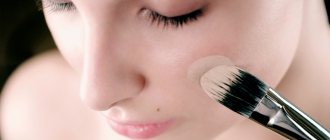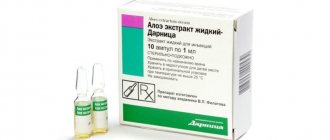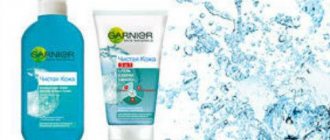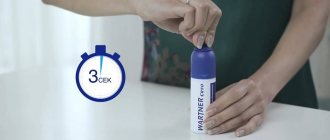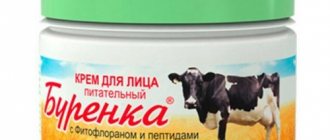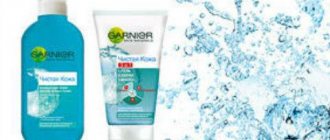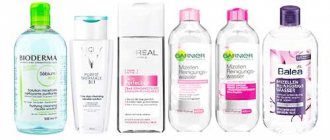Each of us looks forward to summer time. This is a magical time when you can show off your chic figure, enjoy relaxing on the beaches and spend time with friends walking around the city.
But we should not forget that the summer season can not only give a lot of unforgettable days, but also attract a lot of health problems. Moreover, it is during this period that our skin ages much faster if we do not give it enough time before going out on a “date” with the gentle rays of the sun.
If you choose the right special sunscreen, it will not only protect the skin from negative effects, but also get an even, attractive tan, and also, without the risk of getting burns, saturate the body with the very important vitamin D, which is produced only when in contact with the sun. Armed with a special cosmetic product, you can safely spend time outside without fear for the condition of your skin.
Today, a wide variety of products are offered to protect the dermis, which differ in their composition and quality characteristics. But in this article we will pay special attention to creams labeled PPD.
What is PPD cream
If you see these three mysterious letters on a cosmetic product, you can be sure that it was created to protect the skin. The PPD level is an indicator of skin protection from the negative effects of UV rays. In parallel with SPF, the mentioned factor can provide the necessary protection, as well as protect the skin from photoaging and even burns.
If you buy sunscreen with PPD, you can sunbathe without fear, but even when using this product, you should adhere to the rules for tanning (sunbathing at the recommended time, regularly applying cream, etc.). Modern manufacturers offer creams with PPD, the maximum level of which is 42.
This indicates that the moment the substance is applied to the surface of the skin, it begins to actively work and protect against exposure to UVA rays by 42% more than without its use. It is worth noting that not every manufacturer uses the PPD method, and if you do not find this abbreviation on a tube of cream, then you should look for the level of protection against UVA rays.
Other factors affecting skin sensitivity to the sun:
In addition, keep in mind that even in the same person, whose phototype remains unchanged, sensitivity to the sun may change depending on various factors.
Keep in mind that:
1. The southern and equatorial sun is traditionally more aggressive than the sun in central Russia. And if you usually don’t get sunburned at home even without sun protection, under the rays of the scorching southern sun you can get sunburnt. This can happen even during “safe hours”, and even in cloudy weather, and even if you apply your usual sunscreen, which you usually use and which has not let you down before.
There is such a thing as the Ultraviolet Index (UVI / UV Index), each region will have its own level of ultraviolet concentration and its own index. The closer to the equator and the more resort-like the place, the higher this index is usually; it is also affected by the thickness of the ozone layer. You can see information about the level of ultraviolet index in a particular location in some weather forecasts. For example, it is indicated on the iPhone.
This means that if you spend the summer in the city and are in the office during the day, you can choose a lower spf, and in turn, when going to a resort, you need to pay increased attention to sun protection and purchase sunscreen with a higher level of protection.
You can also check the ultraviolet index on the website https://nesgori.ru/
2. Taking certain medications can also increase skin sensitivity to the sun . This largely applies to fairly common OCs, which are prescribed to every woman almost like vitamins.
I myself became a victim of these drugs, having acquired chronic hyperpigmentation on my face, which blooms every spring for me even several years after I stopped taking them and am fighting hyperpigmentation with all the methods available to me. Now the situation is better, but at the time of taking OK the situation on my face was almost catastrophic.
It’s a pity that the doctor, when prescribing the medicine, did not consider it necessary to warn me about the need to buy a cream with a high spf. So be vigilant if you are prescribed a medicine, read the instructions carefully and pay special attention to the sanitary block if you are taking such drugs.
3. Cosmetic procedures, for example, peelings, acids, retinol, injection methods are usually aimed at intensive skin renewal - they can increase its sensitivity to the sun. This applies to the skin after any injuries and burns. Accordingly, renewed skin is thinner and therefore the sun is much more dangerous for it. Again, from my own experience, I can confirm that chemical peels significantly increase the skin’s sensitivity to the sun, and this applies not only to the “safe time”, in the fall and winter, when these procedures are carried out, but also a few months after this course, the skin becomes much more more susceptible to solar radiation. So be careful!
4. Hormonal changes in the body and some diseases can also affect photosensitivity.
Pregnancy and banal aging of the body, to which everyone without exception is susceptible, are one of the most common factors responsible for photosensitivity. And if a young body is able to produce its own sun protection, due to the synthesis of a sufficient level of antioxidants, then with age these abilities decrease in each person and the sun manifests its negative effect much more strongly.
And the older we get, the more carefully we should treat sun protection issues.
In general, the main idea is that your body is constantly changing, so once chosen, the sun protection scheme should be periodically reviewed and updated. Just like the sunscreens you are used to using too.
What danger does PPD cream protect against?
Not everyone knows that there are two types of sun rays. They are the ones that negatively affect human skin and pose the greatest danger. We are talking about rays of the following category:
- "A". These are long-wave UV rays that penetrate deep into the skin and damage dermal cells, which causes premature aging of the epidermis. The effect of category “A” rays is not immediately noticeable. Moreover, the consequences of their influence do not appear immediately, but after a short amount of time, the appearance of dullness and sagging skin can be observed;
- "IN". This type of ray includes ultraviolet, characterized by medium-length waves. They also affect the skin, but the result of their “touches” can be seen literally immediately. People experience skin burns or darkening of their skin.
Both categories of rays have a negative effect on the human dermis. That is why it is necessary to provide reliable protection to the skin, which will have a suppressive or reflective (screening) effect. Cream with PPD fully meets these requirements, therefore it is able to protect the epidermis during exposure to the sun.
Today, consumers are offered products that have two types of sun protection factors, namely:
- PPD (permanent pigmentation darkening). Products in this category are active when exposed to waves, category “A”.
- SPF _ This factor can protect against the influence of UV rays of category “B”, which allows you to avoid burns.
Based on this, you can see the difference between products labeled SPF and PPD. In addition, the first version of creams and other protective agents can have an index from 5 to 50+, but PPD products only have 42.
If we talk about the ideal combination of filters present in sunscreen products, then the PPD to SPF indicators should be in a ratio of 2.5: 1 or 3:1.
Skin phototypes - for whom the sun is more dangerous
As I already said, absolutely everyone needs to protect themselves from the sun. But I think you already know that all people are different. And for some, even five minutes in the sun is enough to burn like a boiled lobster, while others never get sunburned, no matter how much time they spend in the sun. It's all about the melanin contained in our skin; the less it is, the more sensitive our skin becomes to the sun and sunburn.
Melanin is inherited in the same way as eye and hair color; moreover, color type and phototype are often interrelated.
All cosmetologists in determining your phototype use a scheme that was proposed in 1975 by Dr. Richard E. Fitzpatrick, a famous American doctor, professor at the University of California, specialist in the field of cosmetology, dermatology and aesthetic medicine. Fitzpatrick noticed that all people react to the sun differently and divided all people into 6 varieties:
- Celtic or first phototype - have very fair skin, often with freckles, with red hair or blond, they have light eyes. They never tan and always get burned. Typical representatives are Nicole Kidman, Renata Litvinova, Renee Zellweger.
- Light European Nordic type (Scandinavian) - their skin is light, often with freckles, light brown, sometimes dark brown hair, light eyes. They sometimes tan, but more often they get sunburned. Typical representatives are Gwyneth Paltrow, Marilyn Monroe, Charlize Theron.
- Central European (dark) type - may have brown or light eyes, dark brown or brown hair and have ivory skin without freckles.
 They tan well, sometimes they get sunburned. Typical representatives are Angelina Jolie, Audrey Hepburn, Natalie Potrman, and, in general, me too.
They tan well, sometimes they get sunburned. Typical representatives are Angelina Jolie, Audrey Hepburn, Natalie Potrman, and, in general, me too. - Southern European or Mediterranean type - dark eyes, dark hair and dark skin without freckles. They tan well and never get sunburned. Typical representatives are Spanish women, Latin women, famous women of this color type include Kim Kardashian, Penelope Cruz, Salma Hayek
- Indonesian or Oriental type - owners of dark hair and eyes with dark skin. These are residents of Asian and Eastern countries; their dark skin tans very well and they never burn. Typical representatives are Lucy Liu, Nicole Schreisinger.
- African - like the oriental type, representatives of this phototype cannot be confused with anyone - they have very dark skin, even black, black curly hair, dark eyes. They never get sunburned. Typical representatives are Naomi Campbell, Tina Turner.
It is your belonging to one type or another that determines what kind of sunscreen you will need and what SPF is indicated for you.
Of course, hair dyeing or colored lenses will not deceive the sun; when determining your phototype, be guided by your natural characteristics.
Features of products with PPD
To properly use special sun protection products, you should study the manufacturer’s recommendations in detail, and also adhere to the following rules:
1. The selected substance should be applied before going to the beach or for a walk. It is better to do this within 20 minutes, thanks to which the cream is perfectly absorbed and the sun protection factor is activated.
2. Distribute the product thoroughly and evenly, paying special attention to the area of the feet, face, ears, arms and shoulders, since these are the areas where the skin burns the fastest.
3. If you plan to visit the beach or swim in the pool, then give preference to moisture-resistant sunscreen cosmetics that will “work” even in water, protecting your skin from UV rays.
4. Try to regularly renew the layer of cream you use, especially after swimming or drying with a towel. In addition, it is important to control the duration of protection of the selected product. Most often this time period is no more than 3 hours.
5. If you plan to be exposed to sunlight for a long time, it is important to use products with a high level of protection.
How does the sun affect the skin?
There are two types of ultraviolet rays:
- UVA penetrates the skin relatively deeply, forms aggressive molecules (free radicals), damages the skin and disrupts the normal functioning of its cells. According to some reports, type A rays can cause skin cancer. They are equally dangerous for people with different skin colors.
- UVB penetrates to a shallow depth, but can damage cell DNA, causing mutations and cancer (primarily melanoma). These rays cause burns to the epidermis. The lighter the skin, the greater the danger such rays pose to it.
Under the influence of UVA, additional melanin is produced - the skin acquires a golden or brown tint. For almost a century, tanning was considered a sign of health and was fashionable. Girls who wanted to meet the beauty standards of the 20th century spent many hours on the beach or in the solarium to give their skin the desired shade. Now the attitude towards tanning has changed. It has been proven that ultraviolet rays not only cause skin cancer, but also lead to premature aging by destroying collagen.
There is a special term “photoaging”, which refers to changes in the skin that occur under the influence of external factors, primarily ultraviolet radiation. Unlike normal aging (chronoaging), such changes are possible at a relatively young age, especially in those who like to sunbathe. But the good news is that they can be prevented by protecting yourself from the sun.
Good creams with PPD
Each of us has our own requirements for cosmetic products and personal preferences, but there are a number of products that have won universal approval:
– Mustela , containing two types of filters (SPF +50, as well as PPD 25). This cosmetics perfectly protects against exposure to UV radiation and is great not only for adults, but also for children. The composition of the product is enriched with mineral and organic filters, nutrients and avocado oil;
–Antgelios . An amazing development from La Roche Posay, which also contains two categories of filters PPD 19 and SPF 30. One of the most effective protection, which is very easy to apply and ideally distributed on the surface of the skin. It is characterized by low consumption and helps soften the skin;
– Anthelios for face (SPF 30 and PPD 30). This cosmetics is intended for the care of delicate and very sensitive skin, on the surface of which allergic manifestations may form after exposure to the sun. Under normal sun activity, this protection is sufficient to protect the skin.
Types of sun rays
Modern science divides the sun's rays into three categories:
- UVC
- UVB
- UVA
Experts consider the first study option to be very dangerous, since these rays are the “shortest”. They are absorbed by the ozone layer without reaching the earth's surface. UVC radiation is called the most aggressive, so you should protect yourself from it more carefully.
UVB rays are no less dangerous. Thanks to this radiation, a person gets a natural tan, and at the same time, sunburn. This type of radiation is perfectly blocked by glass and clothing. This suggests that even light wardrobe items, as well as sunglasses, can be an excellent defense against an “attack.” The effects of this category of radiation can be observed immediately: redness of the skin, the appearance of blisters indicating burns.
The most aggressive and extremely dangerous rays include UVA radiation. Its impact cannot be stopped by wardrobe items or window glass. It is these rays that attack even the very deep layers of the epidermis.
The peculiarity of UVA rays is that they cause photoaging of the skin, since they have a negative effect on elastin, as well as collagen fibers, which are extremely important for humans.
In this regard, the harmful effects of these rays (including the formation of new moles, age spots, deterioration of skin condition) appear with some delay (usually at the end of the season).
UVA rays allow you to get a tan, but it appears after a certain time (up to 3 days). This “slow” tan lasts much longer.
UVB and UVA rays have a very bad effect on the body because:
- capable of destroying DNA structure;
- negatively affect the functioning of the immune system;
- cause skin cancer.
In addition, the mentioned types of rays are the culprits of photoaging, as well as photodermatoses.
Are sun protection cosmetics harmful?
From time to time, reports appear in the press about the dangers of sunscreen cosmetics. In particular, such products are accused of the fact that the compounds they contain overcome the epidermal barrier and penetrate into the blood. For example, according to some data, oxybenzone can pass through cell membranes and interfere with the natural production of hormones in the body. This information was obtained through experiments, but repeated tests have not proven that oxybenzone is dangerous to humans. A person would need to use it for 277 years to experience any negative effects from using sunscreen.
The toxicity of physical filter nanoparticles has also not been confirmed (see Literature Review on the Safety of Titanium Dioxide and Zinc Oxide Nanoparticles in Sunscreens).
This way, there is no need to worry that using lotions with SPF will lead to unpleasant consequences (The Science of Sunscreen). The benefits of such cosmetics do not raise doubts among scientists. So feel free to use sunscreen lotions to protect your skin.
Sun filters and their indices
In order to protect yourself from the most dangerous rays for humans (“A” and “B”), special sun protection filters have been created. They have their own indices (PPD, IPD, SPF).
If we consider these indices in more detail, we can note that:
– SPF indicates the level of protective action in products that are intended to create a barrier on the skin that protects against UVB radiation. The choice of products containing this factor should be made taking into account the phototype. There are special tables that will help you accurately determine your category and select a product in accordance with the rules;
– PPD , as well as the IPD designation, indicate that cosmetic products are intended to protect against UVA radiation. The level of protection against this type of rays is indicated using the IPD index (instant pigmentation darkening).
The highest IPD indicator can be a level of 90 (skin protection from negative sun exposure, namely from UVA rays, is 90 percent).
As for the PPD index (persistent level of pigmentation darkening), it indicates by what amount the level of UVA radiation can be reduced when using a cosmetic product.
As mentioned earlier, today there are products available with a maximum PPD value of 42. This indicates that the cream can block 42% of UVA rays. But we note that active work aimed at improving the PPD level is still underway in many research centers, as well as laboratories in different countries of the world. Dermatologists in the United States and European countries call the PPD index more accurate.
In addition to the mentioned indices, today there is also the so-called RA index, which displays the intensity of protection against UVA radiation. This index may be accompanied by a plus or several signs of this type.
If you come across a sunscreen that bears the designation BROAD SPECTRUM, this means that the product has a wide spectrum of exposure and can provide protection against the most dangerous rays, namely UVB and UVA radiation.
Will using sunscreens lead to vitamin D deficiency?
Sunscreen cosmetics, by blocking ultraviolet rays, can interfere with the production of vitamin D. However, this is not a reason to refuse sunscreens. Contrary to popular belief, it is not necessary to fry for hours in the direct rays of the sun to produce the vitamin - a 15-minute walk on a sunny morning or before sunset is enough. In addition, in case of hypovitaminosis, additional medications are recommended.
Scientists' studies show that vitamin D is produced equally well in those who use sunscreen lotion and in those who do without it during everyday activities (The Effect of Sunscreen on Vitamin D).
Spray or cream - which is better?
This question is asked by almost every person who wants to purchase effective and easy-to-use sun protection. But, when choosing a reliable product, an important role should be given to your phototype, and, based on this, select a specific product.
Remember that owners of lighter skin should give preference to products with maximum protection, which will avoid burns, peeling and excessive dryness.
Of course, in order to use the selected product as conveniently and comfortably as possible, you should pay attention to the release form. What is better to choose, cream or spray?
The answer to this question will not cause difficulties if you familiarize yourself with the following features of the choice:
1. If you have combination or oily skin, then the best choice in your case will be gels with a light texture. Lotions and emulsions that have a mattifying effect are also suitable.
2. Dry skin, including those with various types of dermatoses, requires special care. That is why you should pay attention to moisturizing creams, as well as milk, which contains hyaluronic acid, natural vegetable oils, or antioxidants.
When choosing cosmetic products for the face, you should pay attention to the fact that it includes additional ingredients whose work is aimed at protecting the skin from the aging process.
In addition, the products should include components that fight the formation of age spots, substances that can moisturize the skin and have a reflective effect. It is important that components such as coenzyme Q 10, chamomile oil, yarrow oil and other natural ingredients of a similar type are present.
Surely everyone understands that the spray is much more convenient to use. It is evenly distributed on the surface of the skin, is not accompanied by a sticky effect, and also does not stain your hands. But this product has its drawback - it is not resistant to water.
Modern specialists have developed sprays that do not have this defect, but their cost is quite high, and they are used up very quickly.
In addition, water-resistant sprays contain a large number of chemical filters, and some manufacturers even use alcohol, which can lead to allergic reactions, dry skin, and skin irritation. That is why such products are not recommended for use by those with problem skin.
Composition of sunscreen.
Active components can be divided into two groups.
- Protective filters.
- Active components that expand functionality.
Sun filters. The most powerful chemical filters are synthesized organic substances. Compared to them, natural filters are less effective.
This is not surprising; cosmetics has ceased to be applied botany. That is why earlier we allowed the use of adjectives - pseudo-ecological, pseudo-natural. The basis of working cosmetics: chemistry, biology and medicine. Natural cosmetics can only have superiority in marketing campaigns, promotions and subjective opinion.
- Chemical filters - benzophenones, cinnamates, salicylates, etc. - these synthesized substances form the basis of sunscreen chemical filters. They can be supplemented with natural components, for example, pigments. But their effect is much weaker than synthesized filters.
- Physical filters, the most common are titanium dioxide and zinc oxide.
Active ingredients for additional impact. Inseparable companions of ultraviolet radiation, as well as any other aggressive influence, are free radicals. For this reason, antioxidants as well as humectants may be included in the composition.
Products with PPD to protect your face in sunny weather
It is no secret that the skin of the face is the most vulnerable area where sunburn most often occurs. The nose, as well as the forehead and cheeks, are always accompanied by excessive redness after prolonged exposure to sunlight. If you do not use special cosmetic products to treat your face, you may encounter not only burns, but also the appearance of early wrinkles, sagging skin, pigmentation and other problems.
In this regard, as summer approaches, you should get a special face cream that will protect you from the aforementioned troubles. It is necessary to lubricate your face with a cosmetic every 2 hours. It is very important to apply this product after being in water.
Existing sunscreens intended for the face today may well serve as a base for makeup. This is very practical, since the skin needs special protection not only on the beach, but also in the city. By providing proper care and paying enough attention to it, you can enjoy the attractiveness of your skin and a beautiful tan.
Using special sun protection products, you can not only protect your facial skin from the negative effects of UV radiation, but also saturate it with useful substances. As a rule, such products contain about 50 powerful protective filters that act as a barrier to the negative effects of rays.
This indicator is higher than the content of filters in products intended for the body. That is why, using creams created for the face area, you can protect delicate skin from burns.
What is SPF (Sun Protection Factor)?
This is an indicator of the degree of protection against UVB rays. These rays are especially strong in summer and can cause burns and redness of the skin. Previously, you could find products with SPF 60 and even 100 on sale, but recently in Korea, if the SPF value exceeds 50, they simply put the mark 50+ (a similar situation is in Russia).
For unknown reasons, many people believe that these numbers indicate how long the sunscreen will last after application. This is, of course, not true; It is correct to perceive SPF as a quantitative indicator of the degree of protection against UVB rays.
SPF is a quantitative measure of UV blocking SPF 15 = 14/15 = 93% UV blocking. Penetration of rays into the skin is 1/15 (7%). SPF 30 = 29/30 = 97% UV blocking. Penetration of rays into the skin is 1/30 (3%). SPF 50 = 49/50 = 98% UV blocking. Penetration of rays into the skin is 1/50 (2%). SPF 90 = 89/90 = 98.8% UV blocking. Penetration of rays into the skin is 1/90 (1.2%).
We see that the ray blocking ability of SPF 15 is a whopping 5% lower than SPF 50, while the difference between SPF 50 and SPF 90 is not that great at just 0.8%. After SPF 50, the ability to block sun rays practically does not increase, and buyers often think that SPF 100 is twice as powerful as SPF 50. To avoid such mistakes, in Asian countries, as well as in the United States, everything above 50 units has become mark as SPF 50+. This stopped the meaningless race of numerical indicators between products with SPF above 50.
